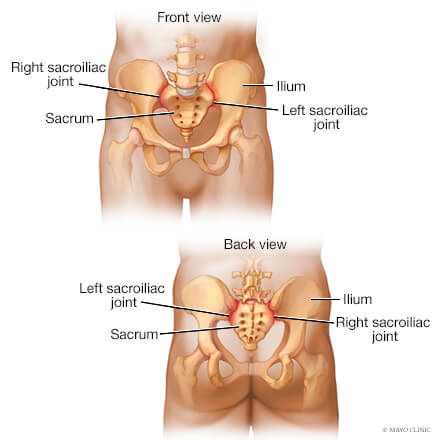
The sacroiliac joints are the joints where the lower part of the spine (sacrum) connects to the pelvis. There are two sacroiliac joints, one on each side, with ligaments in each joint that hold the bones together.
Sacroiliac joint pain can be difficult to diagnose as other conditions can cause similar symptoms. Sacroiliac joint pain is most commonly felt in the low back and buttock but can also be referred into the thigh and leg. If numbness and tingling or weakness is present, an alternative diagnosis should be considered. Sacroiliac pain can be aggravated with prolonged sitting or standing, standing on one leg, stair climbing, going from sit to stand, and with running.
Potential causes of sacroiliac pain include arthritis, traumatic injury, pregnancy and post-partum, systemic inflammatory conditions, and infection. Other potential contributors include spinal scoliosis, leg length discrepancy, and previous lumbar spine fusion. Sometimes, there is no clear cause for sacroiliac pain.
The diagnosis of sacroiliac pain starts with a careful history and physical examination, which helps to distinguish sacroiliac pain from other potential etiologies. Imaging is often recommended, starting with plain radiographs (X-rays). Sometimes your provider will recommend more advanced imaging, including a CT scan or MRI. If the diagnosis is not clear, a diagnostic (anesthetic) injection into the sacroiliac joint can provide valuable diagnostic information.


